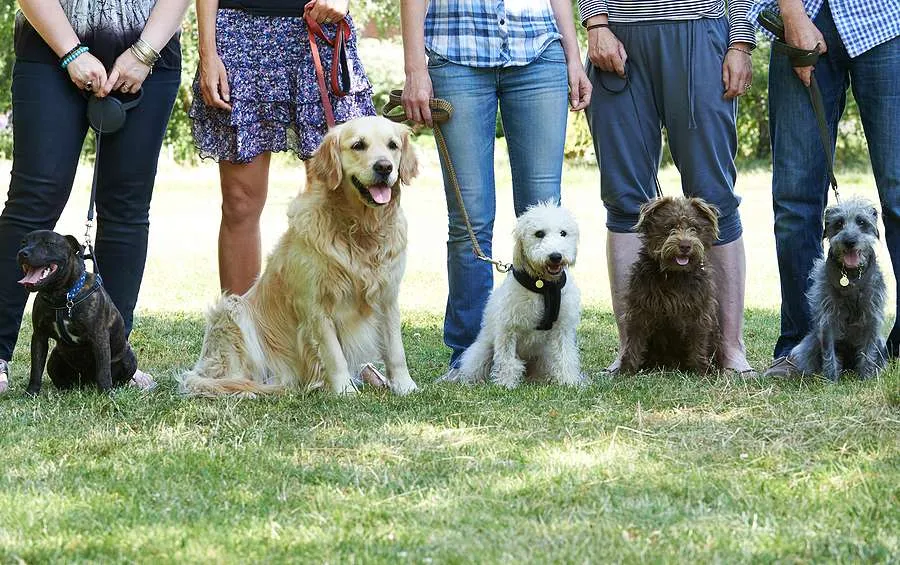Board and train dog training programs have surged in popularity, offering dog owners a convenient way to address behavior issues. You drop off your dog for one to three weeks and hope to receive a well-behaved companion ready for walks, home life, and social settings. But does this method deliver lasting results, or does the progress fade quickly? As experts in positive reinforcement training at Dog Care Story, we’ve seen both successes and pitfalls. These programs can jumpstart skills like leash walking—for more on that, check out our guide on how to leash train a puppy video—but they come with trade-offs. Let’s break down the advantages and disadvantages to help you decide.
 Woman doing obedience training with a dog in an outdoor setting
Woman doing obedience training with a dog in an outdoor setting
Advantages of Board and Train Dog Training
Professional trainers bring specialized skills that many owners lack. Dog training combines science, timing, and intuition—understanding how dogs learn through positive reinforcement, reading body language, and adapting to each pup’s needs. For first-time owners, it’s like learning to ride a horse that’s never been saddled: challenging without guidance.
A skilled trainer using reward-based methods can lay a strong foundation quickly. They teach basics like name recognition, reliable recalls, and polite greetings, priming your dog for ongoing success. This is especially helpful for reactive dogs or those needing socialization.
Life’s demands often leave little time for consistent sessions. Board and train lets you “outsource” the initial heavy lifting. Professionals avoid common human errors, like approaching a dog during a recall command, which confuses canines. Your dog returns with new skills, giving you a head start.
Many programs mimic “camp,” exposing dogs to varied playmates and environments. A high-energy herding breed might learn calmer interactions with brachycephalic dogs, or a rough player could refine politeness under supervision. Socialization opportunities build confidence and adaptability.
 Group of dogs with owners at obedience class outdoors
Group of dogs with owners at obedience class outdoors
Disadvantages of Board and Train Dog Training
The biggest issue? Owners must maintain the training. Even pros can’t teach college-level behaviors like distraction-proof heeling in weeks—it’s like expecting quadratic equations after basic counting. Without your practice, skills erode fast, as your cues drive 80% of long-term behavior.
Time constraints limit depth. Two weeks might cover sit, down, and stay in a controlled yard, but real life demands more. Pros prioritize trust-building first, like house training and basic trust, over a laundry list of cues. Overloading leads to stress or incomplete learning.
Context matters immensely. A two-minute stay in a trainer’s yard doesn’t transfer to your chaotic living room. Programs must emphasize fading cues across distance, duration, and distractions—like recalling mid-squirrel chase versus dinner calls. Without owner training in varied settings, generalization fails.
Costs are staggering: $2,800 for two weeks, plus extras like handler sessions at $500. Compare to group classes at $140-150 for six weeks, where you and your dog learn together weekly. Board and train is 20x pricier, straining budgets for vet care or toys. For puppy recalls, see our tips in how to train a puppy to come on command.
 Group of experienced dog trainers gathered at a farm
Group of experienced dog trainers gathered at a farm
Unknown methods raise red flags. What happens off-site? Some promote prongs, e-collars, or dominance tactics despite evidence of harm. The American Veterinary Society of Animal Behavior warns against aversives, citing increased fear and aggression risks. Testimonials glow, but without oversight, fear-based moments can scar resilient dogs permanently.
You can’t “walk out” like in classes. Vetting requires tours, method details, owner coaching plans, and checks like BBB reviews. Stakes are higher miles away.
 Vintage photo of dog trainers, consultants, and volunteers from 2006
Vintage photo of dog trainers, consultants, and volunteers from 2006
When Board and Train Might Work—and When to Skip It
Our experience at Dog Care Story, spanning decades of positive classes, shows bias toward hands-on owner involvement. We’ve helped countless dogs post-bad experiences, reinforcing caution.
That said, board and train suits crises: sudden life changes needing quick basics, or trusted pros prioritizing your skills transfer. Demand realistic expectations—no miracles—and affordable, punishment-free options.
Post-pandemic, dog training boomed with hype. Buyer beware: Vet facilities, methods (positive only?), owner sessions, and guarantees. For leash issues common in breeds like Labs, explore behavior problems with labrador retrievers.
Jumping persists too—try how to stop a dog jumping on sofa or how to get puppy to follow on leash.
 Maggie the dog looking expressive, reminding focus on dogs
Maggie the dog looking expressive, reminding focus on dogs
Final Thoughts on Board and Train vs. Classes
Board and train offers pros like pro kickstarts and socialization but falters on owner skills, context transfer, costs, and method risks. Classes build lasting bonds affordably, with real-world practice.
Choose based on your situation: Opt for vetted positives with owner focus. At Dog Care Story, we champion group classes for sustainable results. Share your experiences below—what worked for you?
References
- American Veterinary Society of Animal Behavior. Position Statement on Humane Dog Training (linked via pawsomeuniversity.com reference in original).
